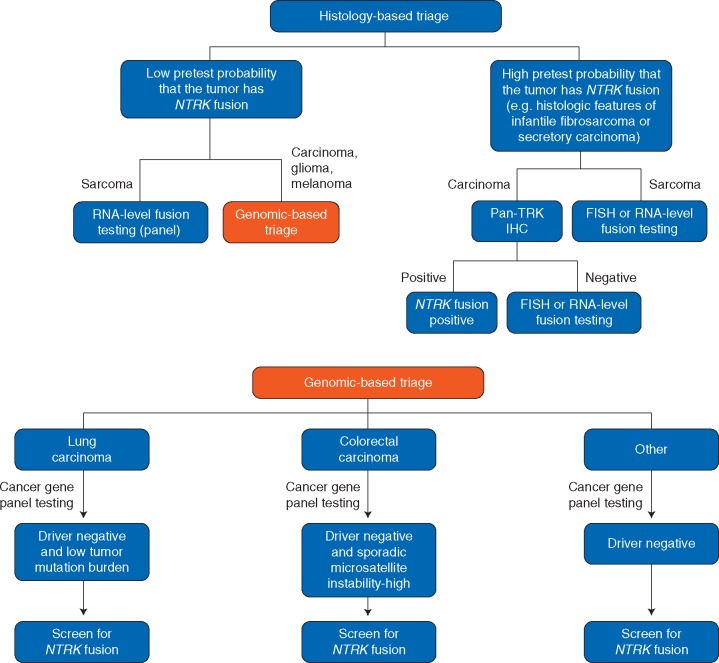Figure 2.
Diagnostic algorithm for NTRK testing. Histology-based triaging should first be carried out to separate the rare cancer subtypes that commonly have NTRK fusions from those that have a low pre-test probability of NTRK fusions. In the tumours that often have oncogenic NTRK fusions, confirmatory methods can be used. In secretory carcinomas, pan-TRK immunohistochemistry can be used as an initial screen, but if negative, additional testing with FISH or RNA-level fusion testing should be used. In sarcomas, immunohistochemistry should be eschewed due to its lower specificity. It is also worth noting that comprehensive fusion testing (for all major sarcoma fusions) is increasingly being carried out as a first-line test in sarcomas rather than waiting for results from a DNA-based triage as one would in carcinoma. We therefore recommend inclusion of NTRK primers in comprehensive sarcoma fusion test panels. In cancers with a low pre-test probability of NTRK fusion, such as most carcinomas, gliomas and melanomas, molecular testing such as DNA-based cancer gene panels is often carried out, and driver status can therefore be used to narrow down the tumours that should undergo further screening for oncogenic fusions, as NTRK fusions are typically mutually exclusive with other common mitogenic driver alterations that activate MAPK signalling. The resulting ‘driver-negative’ cases are therefore likely enriched for NTRK fusions and these can be screened for by IHC or an RNA-based fusion panel assay. For lung and colorectal cancer, we highlight how to further enrich for NTRK fusions in settings where broad, routine screening is not possible.

